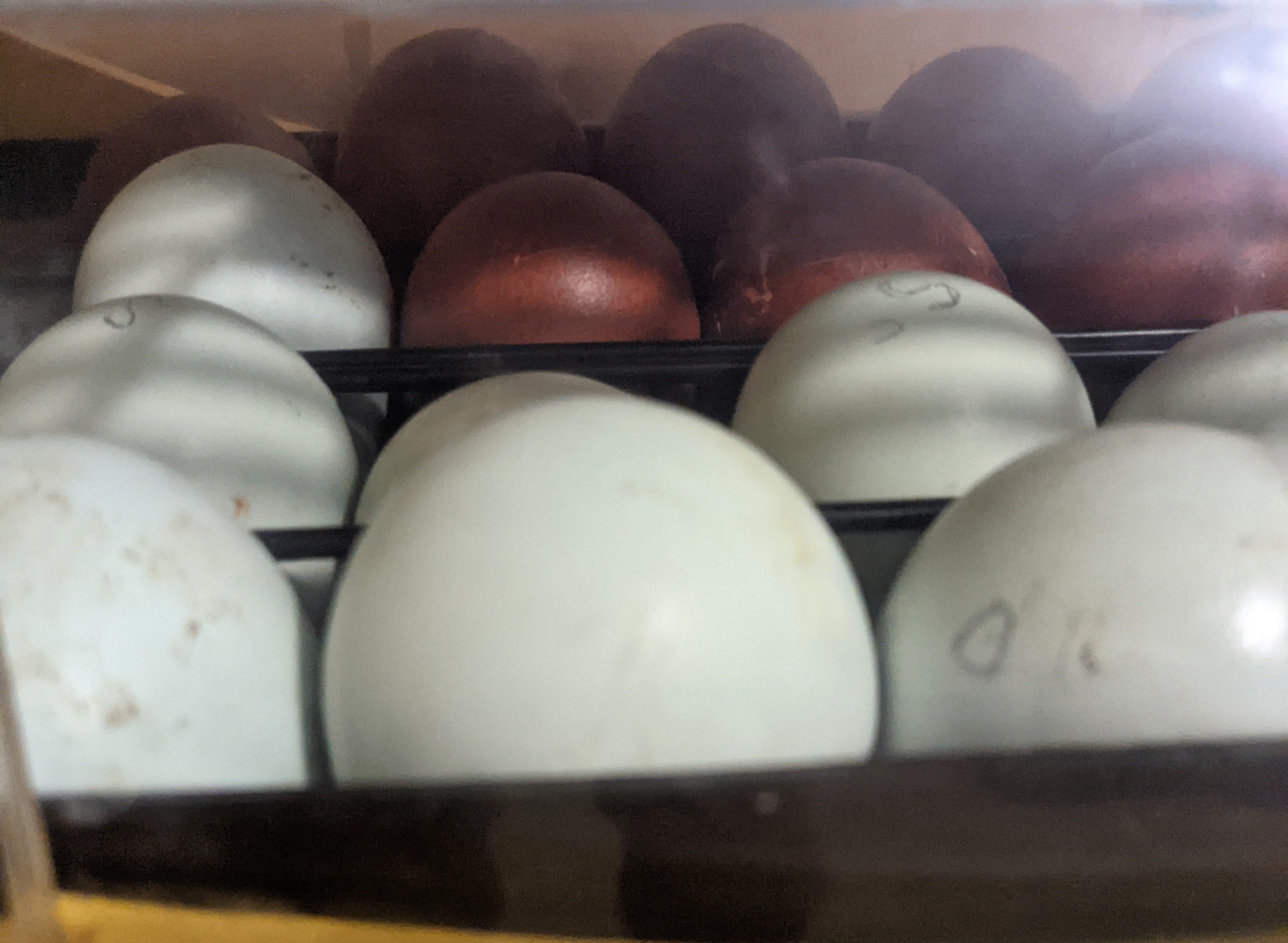
When you artificially incubate eggs as often as I do, you understand that bad things can happen. That’s why I think of hatching as bittersweet: the joy brought by new hatchlings is tempered by the sadness of those that die or have problems that may adversely impact their quality of life. Despite the inevitable lows, I find that there will be experiences that profoundly affect me, and that keep me going…like the immense strength in a tiny chick’s will to live.
Frankly, incubating shipped eggs this season has been an exercise in frustration. While there are many potential causes for shipped egg incubation failures, my experiences lead me to believe that a primary factor is that shipping has simply been too rough and too inefficient. And when rough shipping has damaged eggs, sometimes there’s no coming back. Of a shipment of 15 Lavender Ameraucana eggs, only 1 hatched. The chick needed assistance, and when it finally emerged from the confines of its shell, it became clear that there was a problem.
There were also a couple of problems from the seller side of the transaction, like the fact that most of the eggs were pullet-sized (from younger birds), rather than full-sized. While pullet eggs can – and do – hatch, chicks from the eggs of mature hens hatch more easily and are often more vigorous than those hatched from pullet eggs.
Another seller issue: the packing. While each egg was wrapped, individually, in bubble wrap, they were packed into a box that had shredded paper on the bottom and sides, but only air pillows (the plastic baggies filled with air) on top. By the time the box arrived, the air pillows had deflated to some extent, leaving a gap between the eggs and the top of the box – a space that allowed damaging movement and impacts to the eggs.
The seller did ship the eggs promptly (from a location a little over 700 miles away). Unfortunately, USPS moved the package around in the same state (of origin) for 3 days – even though they were shipped via Priority Mail – and then flew them to the destination state, where they were delivered the next day. So, in all, 4 days from shipping to receipt, and 3 of those days were spent just being transferred around in the originating state…no doubt by automated equipment that tossed the box around. Thanks a lot, USPS! 😡
Upon receipt, the box looked ok externally (unlike some I have received). I carefully unwrapped each egg and placed it large end up in a carton to settle. I also candled as I did so, and was disappointed to discover that two of the eggs had significant impact cracking (which I promptly sealed with Liquid Bandage to try to give them a chance) – one was also strangely dark and cloudy inside, so I marked it to keep an eye on it. All of the other eggs had obvious shipping damage, like rolling and detached air cells. This was going to be a difficult hatch.
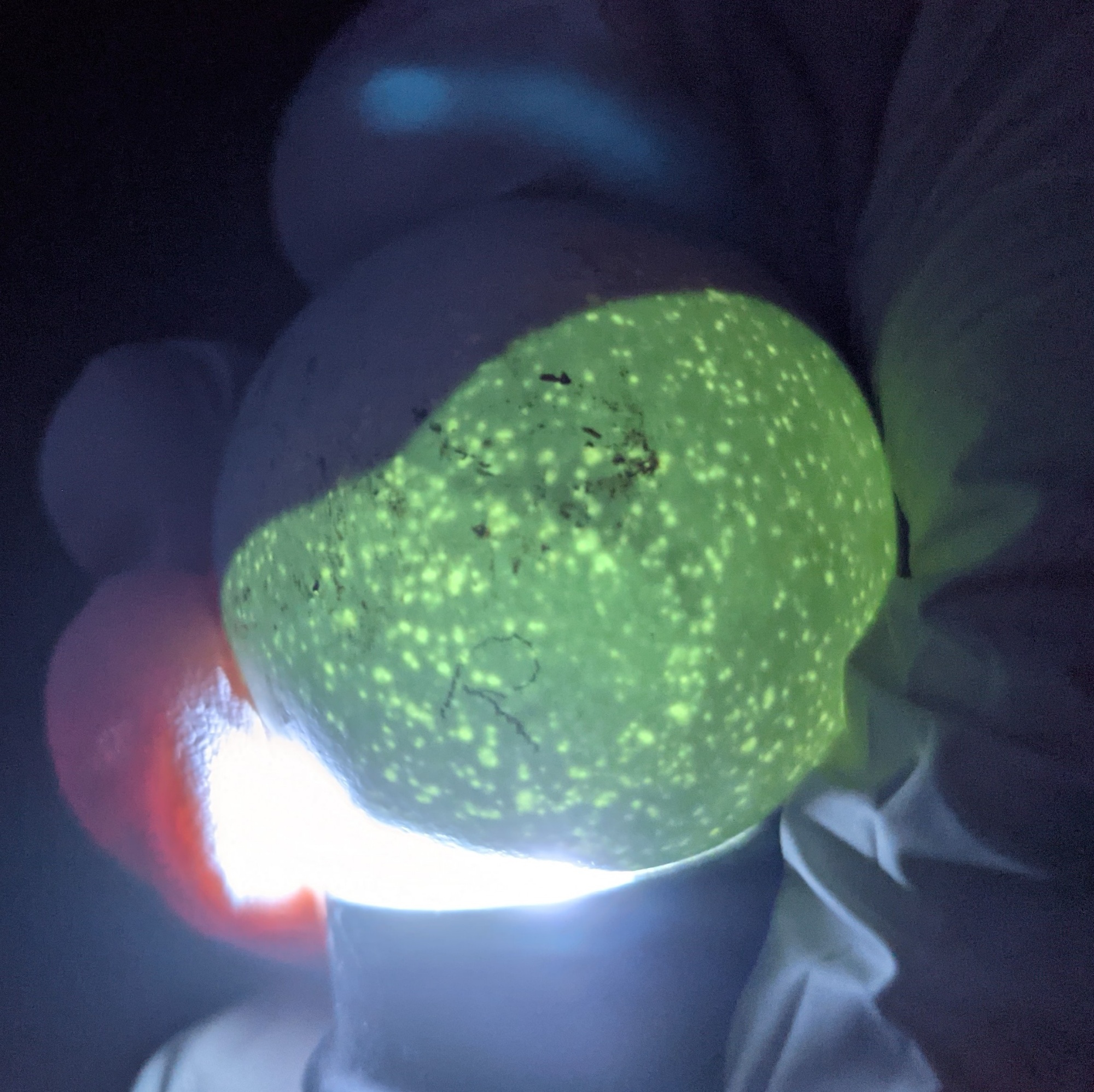
Damaged air cell 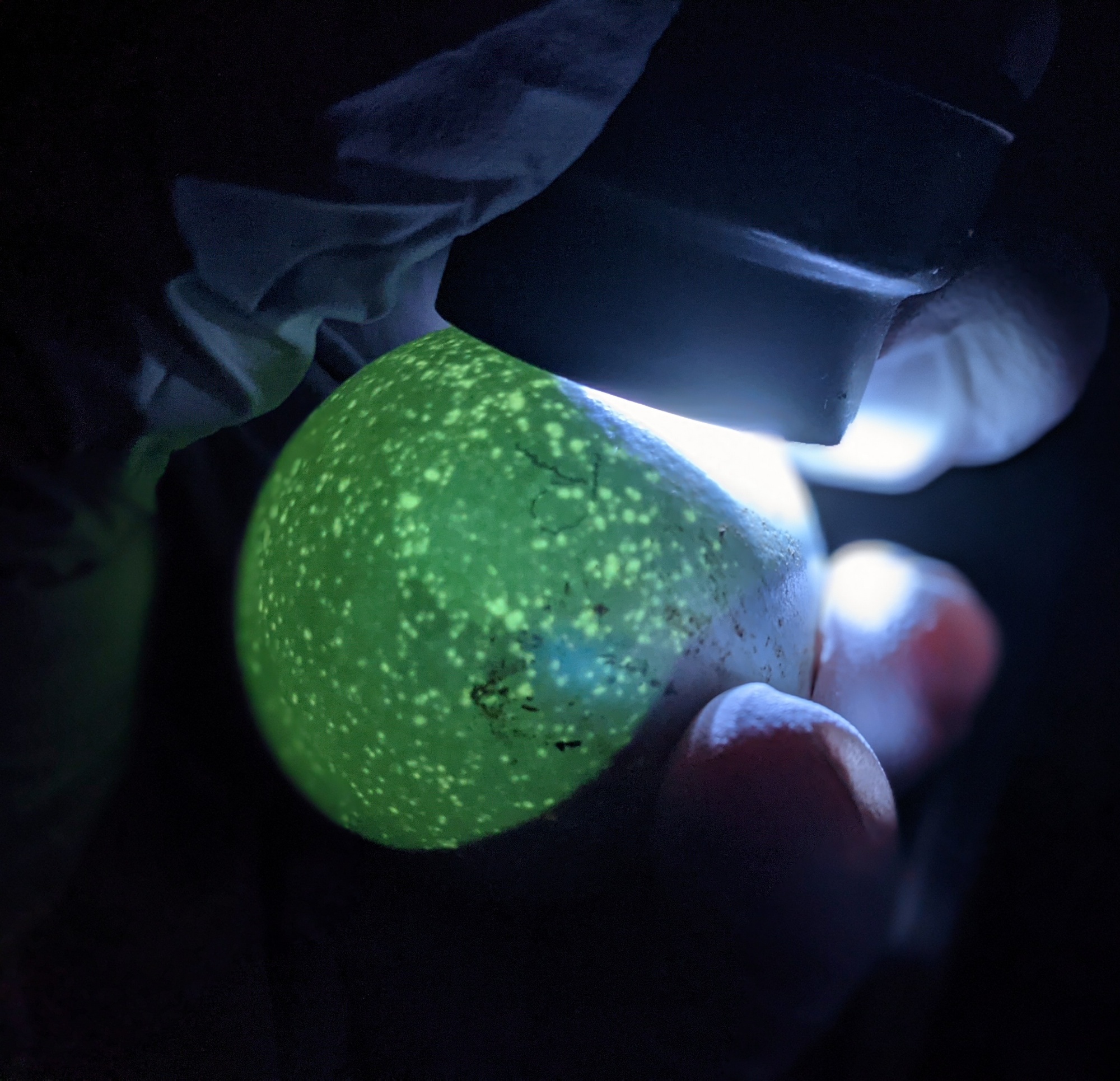
Damaged air cell 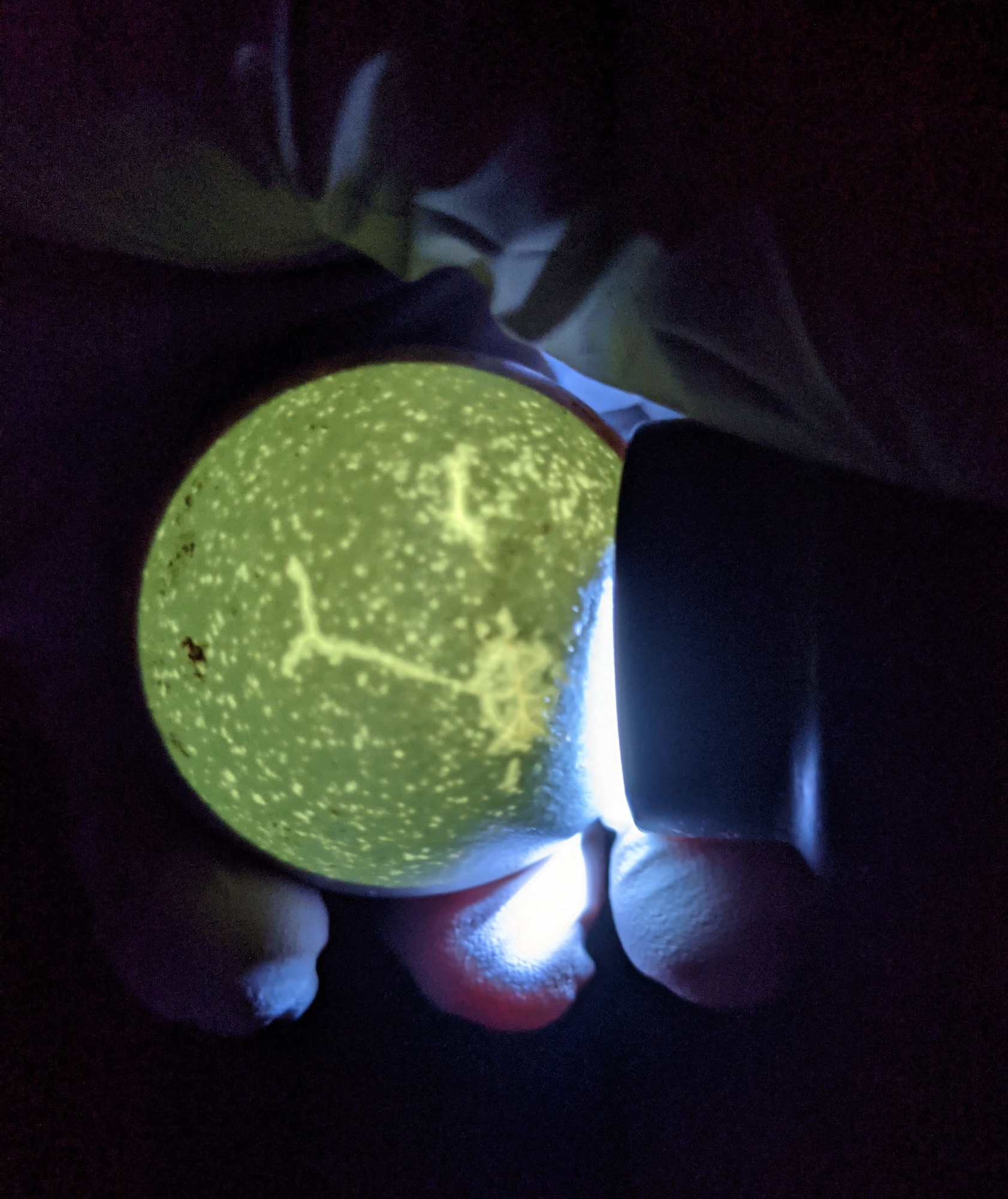
Cracks 🙁
After allowing the eggs to settle, I placed them in an incubator and didn’t turn them for several days. The day after going into the incubator, the cloudy egg began to smell, and I removed it before it could explode in the incubator.
At the first candling, some of the eggs showed development, but there were quite a few blood rings (eggs that begin to develop but quit – not unusual in shipped eggs, especially ones that were subjected to severe shipping stress) and a few that did not begin developing. At the second candling, more blood rings were removed, leaving just 6 developing.
The 6 remaining eggs (including one that was cracked and had been repaired) made it to lockdown. As hatching day came and went, I grew increasingly concerned. On day 22, with no movement and no external pips, I candled the eggs, which revealed that just one egg was internally pipped. I promptly made a safety hole to ensure that the chick would have access to external air.
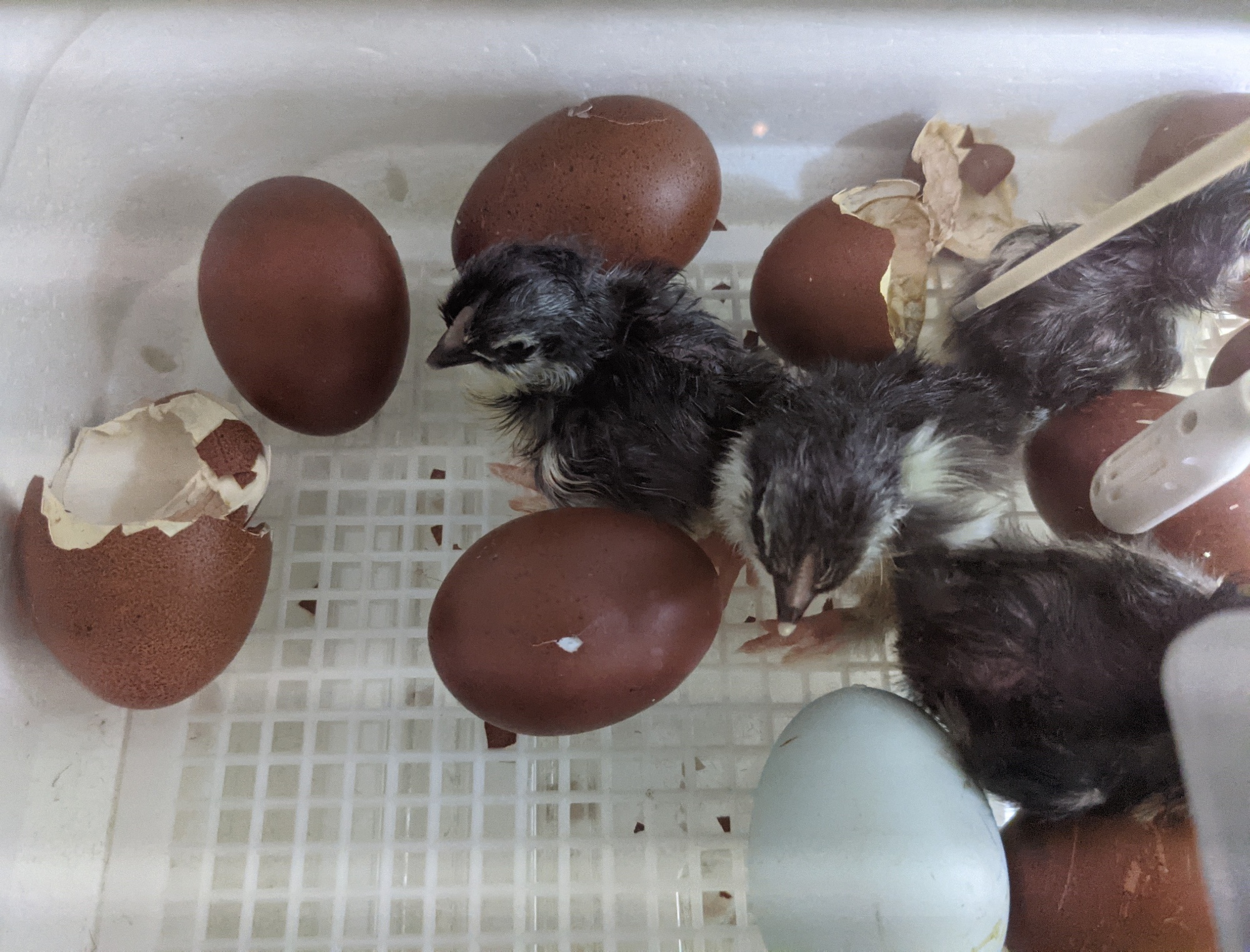
I was puzzled that one of the eggs, a full-sized egg that had been badly cracked but repaired, had been wiggling in the egg prior to hatch day but had now ceased. The movement indicates that the chick is trying to get into hatching position, a good sign. When I candled the egg, though, I couldn’t see the telltale signs of an internal pip (often, a beak moving in the air space), so I didn’t make a safety hole. Unfortunately, a safety hole may have saved that chick’s life: it turned out that the chick had actually internally pipped but failed to externally pip, and had expired. So close, and yet so far. Very frustrating – and part of the bittersweet hatching experience.
I ended up assisting the chick (from a pullet-sized egg) whose egg I had already made a safety hole in. It failed to make progress with external pipping and hatch, and when I assisted it, it became clear why: the chick was stargazing, a condition called “wry neck” (technically, torticollis) in which its head is twisted back and it appears to be looking upward. It’s difficult to see a tiny chick, already struggling just to emerge from its egg, dealing with this kind of condition. I wondered about its prospects for a good quality of life.
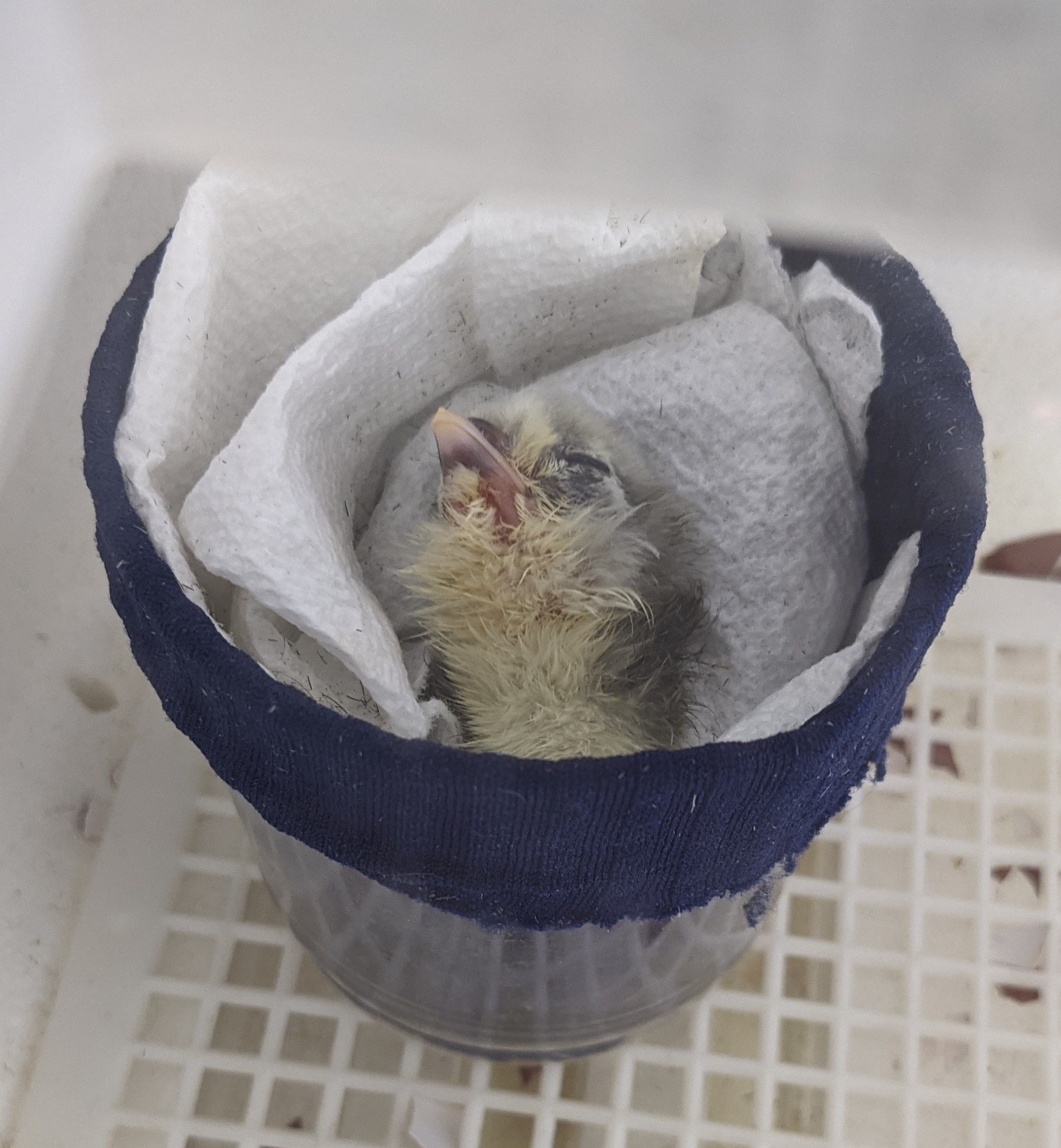
The chick needed a full assist to hatch, so its navel wasn’t completely healed when it emerged. I was prepared for that, and carefully slathered the umbilical bump with antibiotic ointment and set the chick in a cup to finish absorbing its yolk. The poor creature kept gazing up, unnaturally contorted. I braced myself for the possibility that I might have to euthanize this baby that hadn’t even had a chance to live. Another reason why hatching is bittersweet…
But before taking any final measures, I always try to give the hatchling a chance. Knowing that wry neck may be caused by vitamin deficiency (specifically, vitamins E, B1, and selenium), I began administering a specially-formulated, easily assimilated supplement called Poultry Nutri-Drench. I figured that if the condition was caused by deficiency, the chick would respond. I began offering the chick a solution of diluted Nutri-Drench, wetting a cotton swab and placing it against the edge of the chick’s beak to ensure that it swallowed some without aspirating it – a risk if you try to place the liquid in its mouth directly.
The chick wasn’t very cooperative, but I kept at it, administering the supplement several times a day. I knew that time was running out: a chick can survive on its yolk for up to 72 hours (on the long end), but if the chick wasn’t able to eat on its own by then, artificial (tube) feeding would be needed to keep it alive. After about a day, the chick seemed to be used to the routine, and would even try to peck at the swab, seemingly wanting the liquid. But, sadly, its neck remained twisted.
On the morning of the third day after hatch, I went to check on my little friend and was shocked. The chick had managed to get out of its cup and was sitting on the incubator floor. And its head was in a normal position! The chick was able to do all the normal chick activities: eat, drink, run around. It was nothing short of miraculous (at least to me).
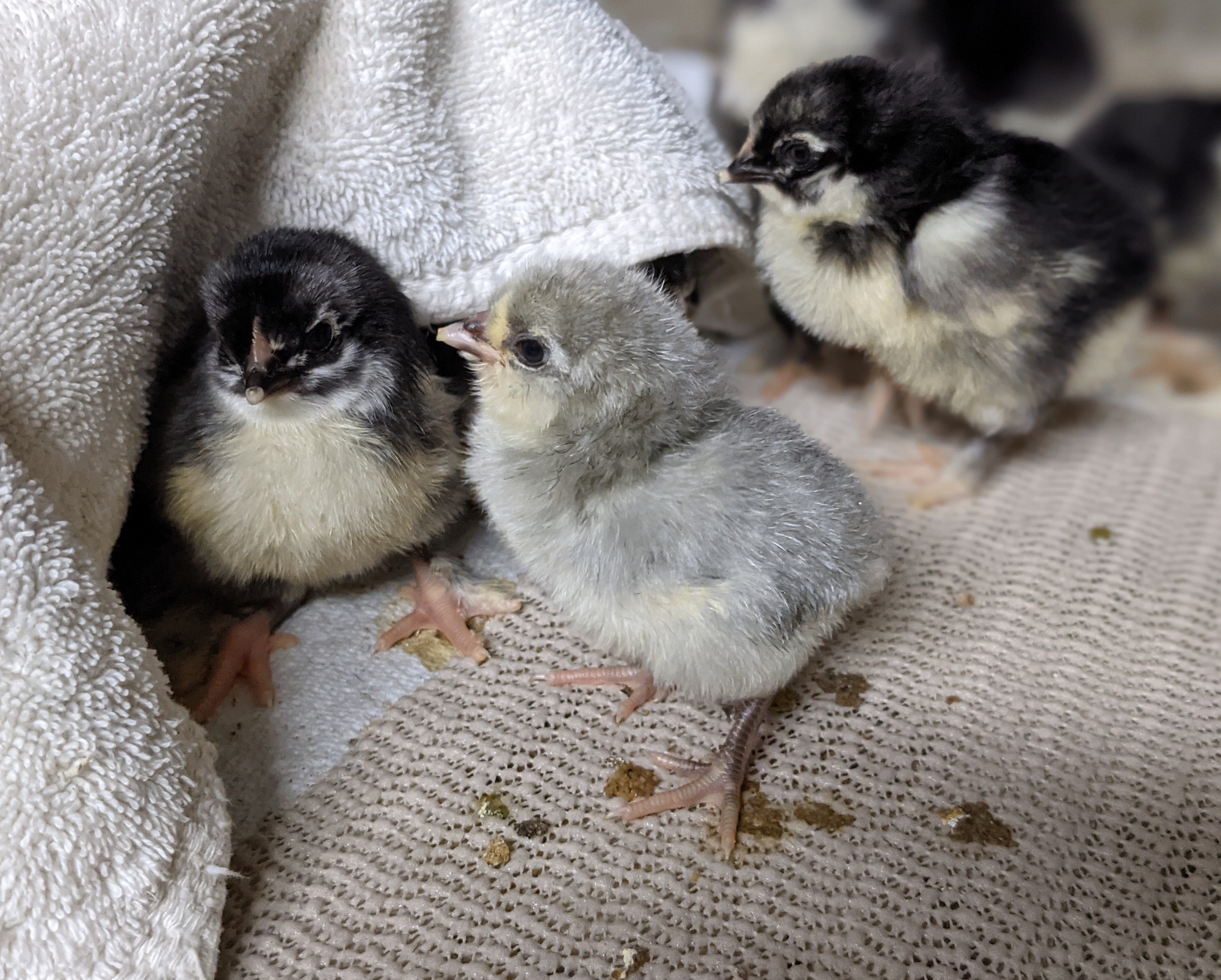
Clearly, the chick had developed wry neck as a result of a vitamin deficiency in the breeder flock and had responded to the supplement. How glad I was to have had Nutri-Drench ready for emergencies like this one! It should be a part of the standard poultry keeper’s first aid kit, along with other essentials, like elastic bandaging, pain reliever-free antibiotic ointment, and electrolyte supplements.
When I see the chick today – now a normal, healthy, and active pullet – her stargazing days just seem like a distant memory. I look forward to watching her grow into a big, beautiful hen, and to one day finding that first colorful egg!
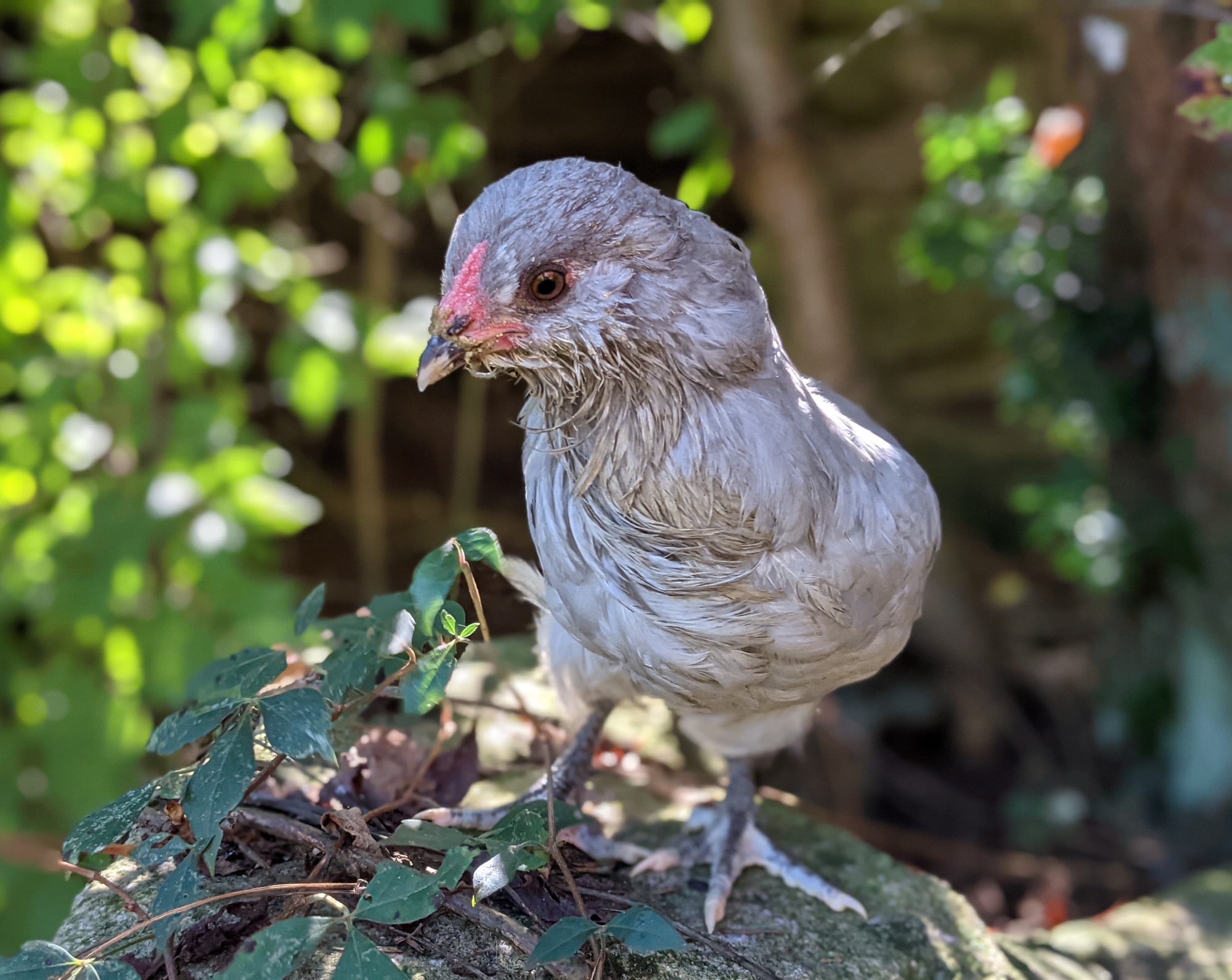
Lesson learned: don’t give up hope until it’s clear that there is no longer room for it.
